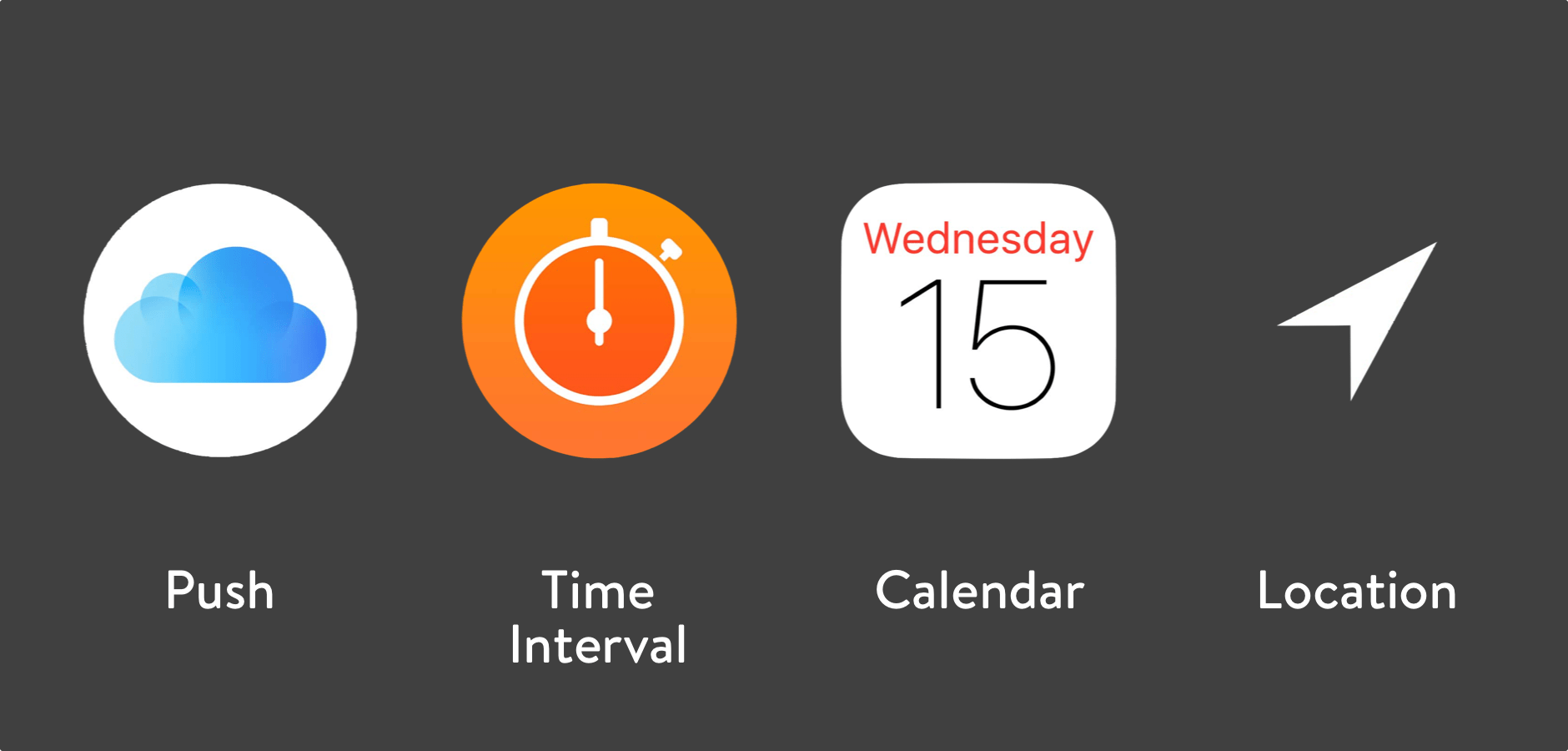Notifications not only provide you an interactive channel to engage users, they have also become one of the most highly used features of iOS. As a result, Apple announced a significant investment in notifications this year at WWDC.

Notifications not only provide you an interactive channel to engage users, they have also become one of the most highly used features of iOS. As a result, Apple announced a significant investment in notifications this year at WWDC.
These updates are important to understand as the changes will most likely impact your notification strategy. While this may require a little additional thought, Apple’s new framework will enable you to have much more control over the notifications you send.
Types of notifications on iOS
Local notifications are fairly straightforward to implement and are triggered directly from a user’s device, based on time or location.
Remote notifications on the other hand will require a server-side component, but will allow you to send on demand targeted messages to a segment of users.

Notifications in iOS 10
Apple’s new framework for user notifications provides these important benefits:
- Simple migration from the existing API to the new framework
- Expanded, actionable content options allow you to engage users in new ways
- Fewer lines of code for developers to maintain
- Notification management enables the removal or updating of pending notifications
- Reduces 3rd party dependencies by handling the display of notifications in-app natively
- Extensions enable rich actionable notifications that include media attachments and custom UI
Scheduling Notifications for Delivery
Apple provides multiple triggers that you can use to send notifications.

Push is used exclusively for remote notifications and requires a server-side application. For example, breaking news alerts are typically triggered by push once a story has been written and published to a CMS.
Time Intervals can be used as a trigger that can be repeated on a regular basis. Imagine a fitness app that reminds an athlete when to begin and finish their exercise.
Location is often used in reminder based apps to remind a user to perform an action at a specific location. A reminder to pick up milk when you leave the office is a simple example.
Calendar based triggers use both a date and time to send a notification. Imagine a recurring notification for a weekly appointment that you need to attend.
Silent Updates enable your application to support background app refreshing. This is done by allowing a user’s device to talk to the server side client and fetch the latest information. It’s usually a good practice to pre-fetch content. Doing so means that when a user launches your app the data is already available.
Managing Notifications
Improve your app’s user experience by updating pending notifications. Managing notifications helps reduce the disturbance normally caused by incoming notifications.
Users will experience less spam from notifications and unwanted annoyance.
For example, if a reader subscribes to a breaking news story for updates they can often be disrupted frequently as the story develops. Notification management fixes this issue by enabling you to overwrite the content of a pending notification with new, updated information.
Engage Users with Custom Notification Interfaces
One of the largest changes coming to notifications in iOS 10 is the ability to create extensions. Most noteworthy, extensions provide you with a customizable interface to display rich notifications to engage users.

Apple introduced the ability for users to interact more deeply with notifications in iOS 8 by providing optional, contextually relevant actions within each notification. This functionality was expanded further in iOS 9, allowing users to reply to your notifications with a message.
Apple has taken this one step further in iOS 10, notifications may now include custom UI and media attachments. As a result, notifications become rich and actionable, enabling you to more deeply engage users.
Media attachments that Apple currently supports:
- Audio
- Photo
- Video
- GIF
Summary
Notifications received a huge overhaul in iOS 10. As a result, we will see new products that engage users through rich notifications. These notifications will contain video, actionable options, and custom interfaces with contextually relevant information.
Media attachments will demand new notification strategies to emerge. These new strategies will support updating pending notifications, which in turn will greatly improve the overall user experience associated with receiving notifications.


